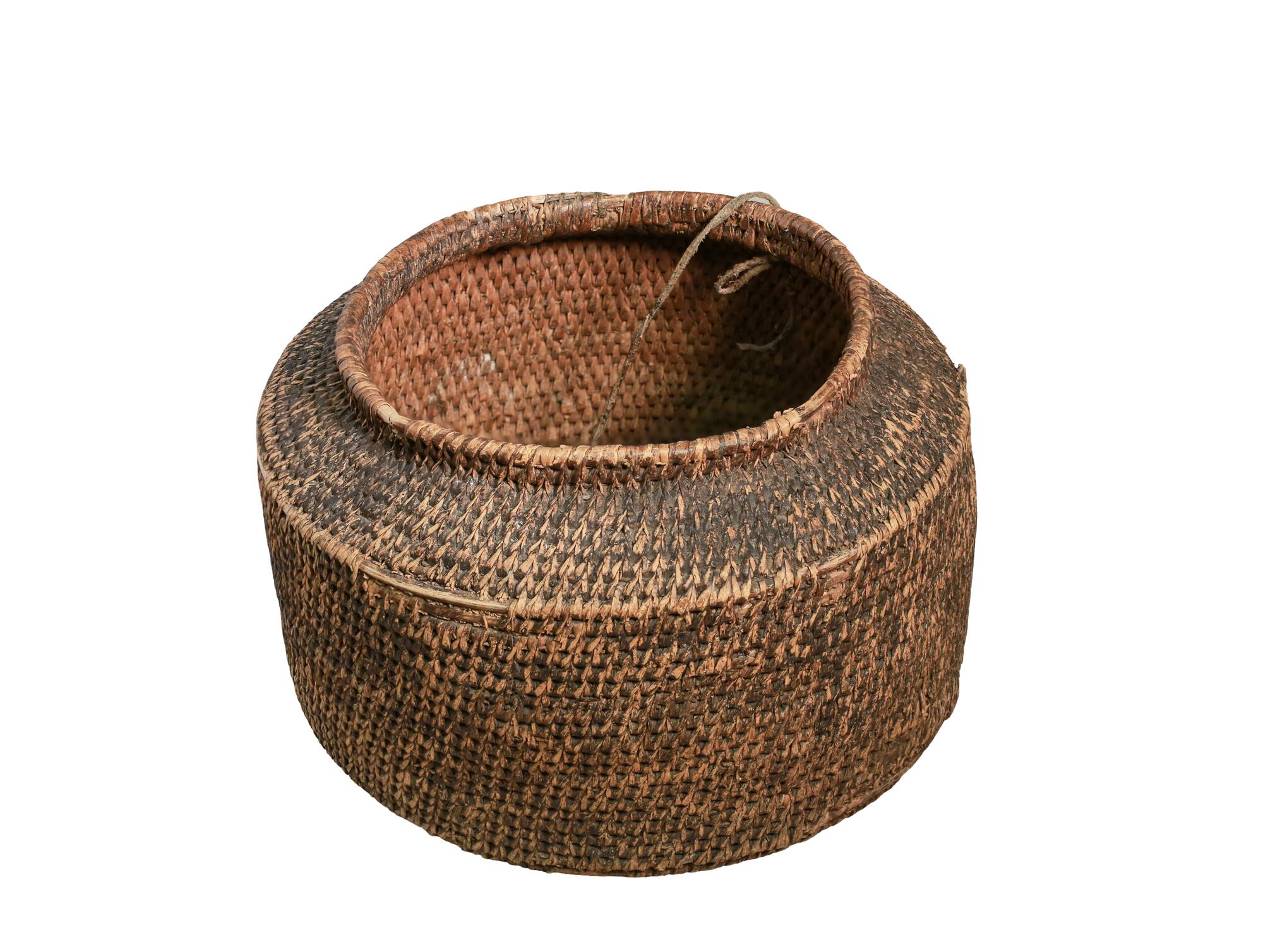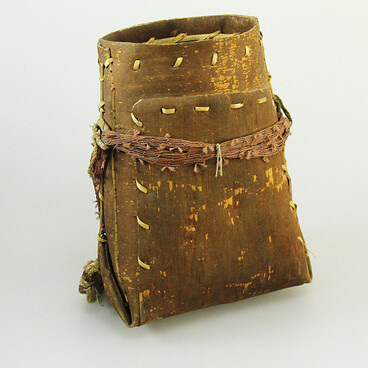Since ancient times, the Khanty used dishes and household items made of natural materials: bone, birch bark, roots, wood. Such items also include root baskets (“kornevatik” in Russian).
A root basket is an item woven from cedar root and bird cherry twigs. It has different shapes: round, oval, rectangular, its size depends on the purpose. People stored the skins of fur-bearing animals in large root baskets, and in medium and small ones there was food, dishware, toys, arrowheads.
The Khanty chose cedar for the manufacture of household items not by chance: compared to the roots of other trees, it is elastic and durable. Roots soaked in the water, remain their properties for a long time. People created fishing tools, household items, baby cradles of cedar. It was considered that only men could work with roots as the master must have enough physical strength.
Not every cedar root is suitable for making a root basket. First of all, the Khanty were trying to find a suitable tree: the trunk had to be smooth, without dry branches at the bottom. Then, they carefully tore up the ground under the tree. The roots were removed from the ground with a blunt ax so as not to damage the rootstock. The Khanty always took good care of nature, so before cutting off the root, they always examined it. If the dug root was not good enough for the master, then he put it back into the ground and buried it. People didn’t take a lot of roots from a tree so not to destroy it.
Then, sarga was harvested for weaving — thin roots for knitting. To do this, the roots were split into four parts and thin ribbons were separated. They were cleaned of shives and, if necessary, divided into narrower ones.
Then masters took bird cherry rods, formed a frame from them, and braided it with cedar root ribbons.
The root basket shape (rounded or rectangular) was determined by the shape of the rod base. Separately, people wove the lid, which was tied with rawhide straps. A handle for carrying the item was made from the same straps.
Thanks to the dense weave and well-fitted lid, the roots protected the contents from damage and exposure to moisture. In the Nefteyugansk Museum Complex, you can the root baskets in the exhibition “Ugra Heritage”. Exhibits were made at the beginning of the 20th century by members of the Kogonchin family (Yugan Khanty), who lived in a camp in the river head of the Samsonovka River, 30 kilometers south of the village of Salym.
A root basket is an item woven from cedar root and bird cherry twigs. It has different shapes: round, oval, rectangular, its size depends on the purpose. People stored the skins of fur-bearing animals in large root baskets, and in medium and small ones there was food, dishware, toys, arrowheads.
The Khanty chose cedar for the manufacture of household items not by chance: compared to the roots of other trees, it is elastic and durable. Roots soaked in the water, remain their properties for a long time. People created fishing tools, household items, baby cradles of cedar. It was considered that only men could work with roots as the master must have enough physical strength.
Not every cedar root is suitable for making a root basket. First of all, the Khanty were trying to find a suitable tree: the trunk had to be smooth, without dry branches at the bottom. Then, they carefully tore up the ground under the tree. The roots were removed from the ground with a blunt ax so as not to damage the rootstock. The Khanty always took good care of nature, so before cutting off the root, they always examined it. If the dug root was not good enough for the master, then he put it back into the ground and buried it. People didn’t take a lot of roots from a tree so not to destroy it.
Then, sarga was harvested for weaving — thin roots for knitting. To do this, the roots were split into four parts and thin ribbons were separated. They were cleaned of shives and, if necessary, divided into narrower ones.
Then masters took bird cherry rods, formed a frame from them, and braided it with cedar root ribbons.
The root basket shape (rounded or rectangular) was determined by the shape of the rod base. Separately, people wove the lid, which was tied with rawhide straps. A handle for carrying the item was made from the same straps.
Thanks to the dense weave and well-fitted lid, the roots protected the contents from damage and exposure to moisture. In the Nefteyugansk Museum Complex, you can the root baskets in the exhibition “Ugra Heritage”. Exhibits were made at the beginning of the 20th century by members of the Kogonchin family (Yugan Khanty), who lived in a camp in the river head of the Samsonovka River, 30 kilometers south of the village of Salym.



